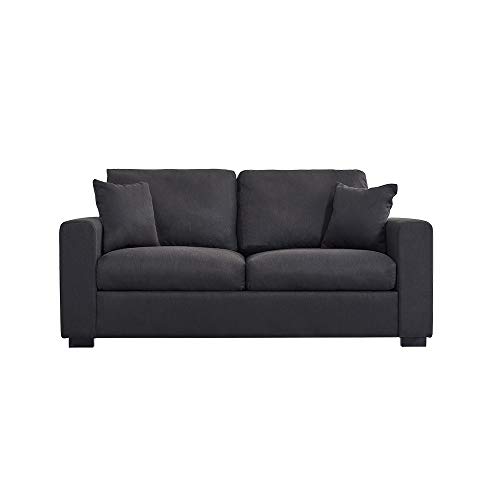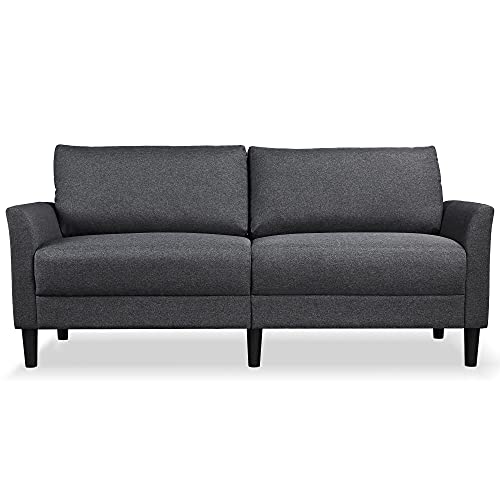Guide To 2 Seater Leather And Fabric Sofa: The Intermediate Guide Towa…
페이지 정보
작성자Pilar 댓글댓글 0건 조회조회 2회 작성일 24-11-07 15:02본문
 Choosing Between a cheap 2 seater fabric sofa 2 seater fabric sofa sale Leather And Fabric Sofa (Https://Www.Google.Co.Ck/Url?Q=Https://Articlescad.Com/10-Tell-Tale-Signals-You-Should-Know-To-Buy-A-2-Seater-Fabric-Sofa-Sale-211974.Html)
Choosing Between a cheap 2 seater fabric sofa 2 seater fabric sofa sale Leather And Fabric Sofa (Https://Www.Google.Co.Ck/Url?Q=Https://Articlescad.Com/10-Tell-Tale-Signals-You-Should-Know-To-Buy-A-2-Seater-Fabric-Sofa-Sale-211974.Html) When you're in the market for a new sofa it can be tricky to choose between fabric or leather. This is especially the case if you don't have much furniture experience.
When you're in the market for a new sofa it can be tricky to choose between fabric or leather. This is especially the case if you don't have much furniture experience.If you have children or live in a tiny apartment, the leather option may be the best option for you. It is easy to clean and looks stunning in most homes.
Comfort
The sofa is typically the focal point in most people's homes and is a major purchase. You want one that is comfortable to lounge for hours, looks great, fits with your decor and can last for a long time. Deciding between leather or large 2 seater fabric sofa isn't easy However, it is essential to assess your priorities as well as your lifestyle and budget prior to making a choice.
Leather is a premium, luxurious material that exudes elegance and luxury in any home. It is durable and stain-resistant, it is safe for pets and children, and will last for a long time when properly cared for. It can be expensive initially and may require regular conditioning to prevent cracks or peeling.
Fabric sofas are available in a broad range of styles, colours and fabrics. They are more affordable than leather sofas. They are also soft and more cosy with the capacity to feel "broken in" right from the beginning. They could be more vulnerable to dust mites or pet hairs and require more frequent cleaning. But, with the advancement of technology and high-performance fabrics, there are now hypoallergenic alternatives available.
The longevity of a sofa made from fabric will depend on the quality of the material However, the majority of fabrics will last up to 15 years if properly taken care of. Regular vacuuming and deep cleaning will ensure that the fabric stays clean and free of odours and spills. Like leather, they are susceptible to sagging and flattening over time. Many fabric couches are treated with chemicals that make them stain resistant and flame-resistant. They can release volatile organic chemicals that can cause allergic reactions and alter the quality of indoor air.
Durability
We usually choose sofas made of fabrics that are durable, especially if we have children or pets. You don't want to pay much upfront and then end up feeling remorseful about buying after the first spill or crowbarred claws. In the same way you don't want to purchase a product that isn't expensive but doesn't stand up to daily use.
Leather is also extremely tough and has a remarkable tear strength. It can also last up to 4 times longer than fabric and is naturally resistant to cracking, fading and flaking over time. It can also be treated to restore its natural oils and appear as good as new.
Fabrics are a less expensive alternative and are available in a variety of colours patterns, patterns, and textures to match any interior design. They are also cleaner than leather and can withstand a significant amount of wear and tear, however, they can be more prone to moisture and can suffer from fading over time.
Microfiber is a good option for its durability and can be found in a variety of colors, but it's not as strong as genuine leather and might not withstand scratches. It's still a great choice for families due to its resistance to stains and spills. It's also easy to clean with a damp cloth.
Suede, on the other hand is a challenge to maintain clean and can be more difficult to repair than leather. It is also prone to losing its shape if not cleaned and may feel rough to the feel. It is also a very thin material and therefore may not be as durable as cowhide and sheepskin leather.
Allergens
Fabrics can have a significant impact on allergies. It is crucial to know the way different options work. Fabrics are known to hold allergens such as dust mites and pet dander, which can trigger symptoms such as asthma, hay fever eczema and rhinitis. These fabrics are perfect for them to thrive.
Leather, on the contrary is not a source of the allergens and offers a constant level of comfort, regardless of the season. However, it could be a trigger for dermatitis, particularly in those with contact dermatitis and who are sensitive to the chemicals used in tanning. To prevent skin reactions, it is important to use vegetable-tanned products and keep a consistent routine for your skin.
Sofas made of leather and fabric offer a high degree of durability, however the material you choose will determine how long it will last over time. A good quality material will withstand shrinking or fading and can withstand spills, body oils and daily use. Modern sofas have stain-resistant treatments that make cleanup easy.
Although you may not be able completely prevent an allergic reaction from the leather sofa, it is possible to prevent allergens from forming by having a lint roller near and regularly vacuuming your living space. This can help reduce the amount of dirt, pet hair and dust mites that build up on your sofa. If you're still suffering from allergies, you can consider replacing your sofa with a more hypoallergenic one. For example, a sofa made of vinyl or synthetic leather is less likely to keep dust or pet dander out of the mites. It can also make it easier to breathe.
Scratches
It is important to think about how much wear you can expect for a leather couch. The amount of time a sofa is expected to last is contingent on the finish, colour and leather quality. It is also important to ensure that it is durable to withstand spills and other accidents. This can be accomplished by searching for a sofa with a sturdy wooden frame and high-density foam cushions.
Leather can be damaged for various reasons, such as stretching and marking the territory or reliving stress. Scratches can be severe, from minor surface scratches to deep cuts and punctures. Small scratches can be repaired by using a conditioner for leather. This will restore the balance between oil and moisture within the leather and prevent it from drying out or cracking. The amount of damage will determine the type of treatment required.
If you have cats, it's an ideal idea to trim their nails regularly, as this will assist in stopping scratching on your couch. You can also stop your cat's scratching habit by offering alternative scratching surfaces, such as cardboard or sisal rope. Another option is using a pet-safe furniture polish which can be applied with an abrasive cloth to the damaged area.
It is essential to clean your leather couch regularly and keep it out of direct sunlight and heat, because they dry it out. This can cause it to crack, which is usually difficult to repair and frequently requires the reupholstery. Use a conditioner for leather as well to keep the leather soft.
Smell
A leather couch tends to have a slightly different scent than fabric. It's because it's porous and can absorb unwanted odors such as smoke, body odor or food quite easily. The good news is that odors tend to disappear over time, particularly if you make use of a fragrance-free, non-toxic and free cleaner.
If the smell is intense, it could indicate that there's something wrong with the foam. This is usually caused by the chemical off-gassing that occurs in polyurethane based on petroleum. If you're concerned about this, look for couches that are CertiPUR-US certified or natural latex foams.
A second way to identify faux leather is to feel for bumps or texture on the back of the sofa. This is a sure sign that it's not genuine top grain leather. You can also conduct an examination by tilting the sofa over and looking for any exposed upholstery backing. If you smell it, then it's probably a synthetic substance, such as polyurethane or polyester. These types of materials are likely to have a different smell than leather.
While a leather couch is more prone to picking up odors, the best way to prevent this is by regularly cleaning your sofa. This keeps it looking good and smelling good, as well preventing it from becoming stiff or brittle over time. Start by vacuuming, dusting and wiping the couch with baking soda (a natural way to eliminate odors). This is recommended to do this every two weeks in order to remove any dirt or dust. Then, apply a leather conditioner in order to keep your sofa's color and texture.
댓글목록
등록된 댓글이 없습니다.

